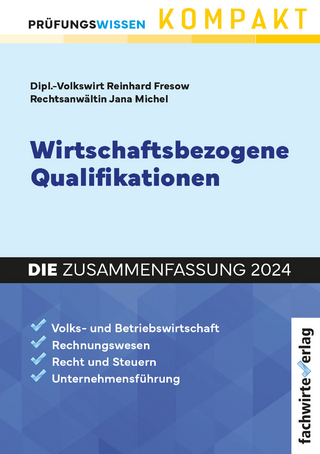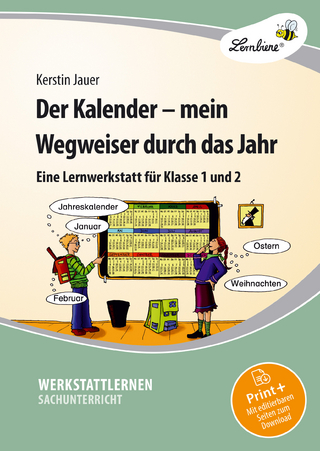
Hands-On Science and Technology for Ontario, Grade 6
Portage & Main Press (Verlag)
978-1-77492-071-8 (ISBN)
- Titel nicht im Sortiment
- Artikel merken
Hands-On Science and Technology for Ontario, Grade 6 is an easy-to-use resource for teaching the five strands of the Ontario science and technology (2022) curriculum:
STEM Skills and Connections
Life Systems: Biodiversity
Matter and Energy: Electricity and Electrical Devices
Structures and Mechanisms: Flight
Earth and Space Systems: Space
Hands-On Science and Technology for Ontario, Grade 6 encourages students’ natural curiosity about science and the world around them as they participate in hands-on activities and explore their environment. Using the inquiry approach, this comprehensive resource
fosters students’ understanding of STEM (science, technology, engineering, and mathematics) skills
makes coding and emerging technologies approachable for both teachers and students
emphasizes personalized learning using a four-part instructional process: activate, action, consolidate and debrief, enhance
relates science and technology to sustainability and our changing world, including society, the economy, and the environment
focuses on practical applications of the engineering design process as students work on solutions to real-life problems
builds understanding of Indigenous knowledge and perspectives specific to Ontario
explores contributions to science and technology by people with diverse lived experiences
Using proven Hands-On features, this book provides resources for both teachers and students including background information on the science topics; complete, easy-to-follow lesson plans; materials lists; and digital image banks and reproducibles (find download instructions in the Appendix of the book).
Innovative elements developed specifically for the Ontario curriculum include the following:
plugged and unplugged coding activities in nearly every lesson
land-based learning activities
opportunities for students to use guided research, hands-on inquiry, and the engineering design process
a fully developed assessment plan to guide assessment for, as, and of learning
ideas and prompts for STEM Makerspace projects
Jennifer E. Lawson, PhD, is the creator of the Hands-On books published by Portage & Main Press. As senior writer and editor for the series, she has contributed to more than 50 publications for teachers and students. Jennifer provides professional development workshops for educators locally, nationally, and virtually, and is a Workplace Wellness Advisor. Her most recent book is a collective effort called Teacher, Take Care: A Guide to Well-Being and Workplace Wellness for Educators. She is also one of the founders of Mission to Mexico, an organization that supports schools in some of the most impoverished communities in Puerto Vallarta. Throughout her extensive career in education, Jennifer has worked as a classroom teacher, resource and special education teacher, consultant, principal, university instructor, and school trustee. She lives with her family in Winnipeg, Manitoba. For over 20 years, Kellie Ierullo (she, her, hers) has been an educator with the Toronto District School Board including as a classroom teacher, special education teacher, and now as a teacher-librarian, technology chair and science/STEM lead educator. Kellie is passionate about helping teachers engage students through meaningful coding and STEM activities and encouraging students to move beyond navigating technology to creating it for themselves. Kellie lives in Woodbridge, Ontario with her family. Jennifer H. Manitowabi (she/her/hers) is an Ojibway educator and PhD student at Lakehead University. Throughout her career in education in both Canada and the US, she has worked as a bus driver, classroom teacher, principal, and education director. Jennifer encourages all teachers to incorporate Indigenous worldviews into their lessons and find opportunities to build relationships with the First Nations of Turtle Island. Jennifer is a member of Lac Seul First Nation, where she currently resides, and can often be found creating artwork that celebrates her culture.
Introduction to Hands-On Science and Technology for Ontario, Grade 6 1
Introduction to Hands-On Science and Technology 2
Program Introduction 2
The Inquiry Approach to Science and Technology 2
21st Century Teaching and Learning 3
The Goals of the Science and Technology Program 3
Hands-On Science and Technology Strands and Expectations 4
Hands-On Science and Technology Fundamental Concepts and Big Ideas 4
Hands-On Science and Technology Program Principles 5
Infusing Indigenous Perspectives 5
Cultural Connections 7
Land-Based Learning 7
Technology 7
Sustainability 7
Program Implementation 8
Program Resources 8
Classroom Environment 11
Planning Units—Timelines 12
Classroom Management 12
Classroom Safety 12
Scientific Inquiry Skills: Guidelines for Teachers 12
Observing 12
Questioning 13
Exploring 13
Classifying 13
Measuring 14
Communicating, Analyzing, and Interpreting 14
Predicting 16
Inferring 17
Inquiry Through Investigation and Experiments 17
Inquiry Through Research 17
Online Considerations 18
Addressing Students’ Literacy Needs 18
Technological Problem Solving 19
Makerspace 19
The Hands-On Science and Technology Assessment Plan 22
Assessment for Learning 23
Assessment as Learning 23
Assessment of Learning 24
Performance Assessment 25
Portfolios 25
Evidence of Student Achievement Levels for Evaluation 26
Important Note to Teachers 26
References 27
Assessment Reproducibles 28
Achievement Chart for Science & Technology 43
Unit 1: Biodiversity 45
Introduction 46
Unit Overview 50
Curriculum Correlation 51
Resources for Students 52
1 What Do We Know About the Diversity of Living Things? 55
2 How Can We Show Classification Systems in Different Ways? 60
3 How Is the Animal Kingdom Organized? 65
4 How Can We Compare and Contrast Animals? 71.
5 What Can We Learn by Investigating an Arthropod Colony? 78
6 What Are Characteristics of Organisms in the Plant Kingdom? 84
7 How Do Living Things Adapt to Survive in Their Environment? 88
8 What Can We Learn About Organisms Through a Pond Study? 92
9 What Are Bacteria? 99
10 What Is a Fungus? 103
11 What Are Some Benefits and Issues Related to Biodiversity? 107
12 Inquiry Project: How Can I Use Technological Problem-Solving Skills to Explore the Diversity of Living Things? 112
Unit 2: Flight 115
Introduction 116
Unit Overview 119
Curriculum Correlation 120
Resources for Students 121
1 How Do Organisms and Other Objects Move Through Air? 124
2 What Are the Properties of Air? 130
3 What Are the Features of Lighter-Than-Air Flying Devices? 138
4 What Is Bernoulli’s Principle? 144
5 How Is Bernoulli’s Principle Used in the Design of Airplane Wings? 150
6 What Are the Forces Affecting Flight? 155
7 How Are Unbalanced Forces Used to Steer Flying Devices? 163
8 How Is Pneumatic Power Used in Flight? 169
9 How Can We Design and Construct Model Aircraft to Meet Certain Criteria? 173
10 Inquiry Project: What Is the Environmental Impact of Aviation Technology? 177
Unit 3: Electricity and Electrical Devices 181
Introduction 182
Unit Overview 185
Curriculum Correlation 186
Resources for Students 187
1 What Do We Know About Electricity? 190
2 What Is Static Electricity? 194
3 What Is Current Electricity? 201
4 How Do We Get Electricity From Chemical Sources? 205
5 How Do Electric Circuits Work? 211
6 What Are Electrical Conductors and Insulators? 215
7 How Do Electrical Switches Work? 219
8 What Do We Know About Parallel and Series Circuits? 222
9 How Can We Design and Construct an Electrical Device to Perform a Useful Function? 228
10 How Can We Construct an Electromagnet? 231
11 How Do Motors and Generators Transform Energy? 235
12 What Is the Environmental Impact of Using Electricity? 241
13 How Can We Reduce the Environmental Impact of Using Electricity? 247
14 Inquiry Project: What More Do I Want to Know About Electricity? 253
Unit 4: Space 257
Introduction 258
Unit Overview 262
Curriculum Correlation 263
Resources for Students 264
1 What Do We Know About Space? 268
2 What Are the Features of Our Solar System? 272
3 What Are the Characteristics of the Planets in Our Solar System? 277
4 What Are the Characteristics of the Sun? 283
5 Why Do We Have a Day/Night Cycle? 287
6 Why Do We Have a Year Cycle? 291
7 How Can We Use the Sun to Tell Time? 295
8 What Is the Surface of the Moon Like? 299
9 What Are Gravity, Mass, and Weight? 303
10 What Are the Phases of the Moon? 308
11 What Is a Lunar Eclipse? 312
12 What Are Constellations? 315
13 What Can We Learn About Space Exploration? 319
14 How Have Canadians Contributed to Space Science and Technology? 323
15 How Has Space Exploration Contributed to Daily Life on Earth? 327
16 What Are the Advantages and Disadvantages of Space Exploration? 331
17 Inquiry Project: What More Do I Want to Know About Space? 335
References 339
Appendix: Image Banks 341
About the Contributors 352
| Erscheint lt. Verlag | 4.12.2025 |
|---|---|
| Co-Autor | Kellie Ierullo, Jennifer Manitowabi |
| Sprache | englisch |
| Maße | 215 x 279 mm |
| Gewicht | 857 g |
| Themenwelt | Schulbuch / Wörterbuch ► Unterrichtsvorbereitung ► Unterrichts-Handreichungen |
| Sozialwissenschaften ► Pädagogik ► Schulpädagogik / Grundschule | |
| ISBN-10 | 1-77492-071-9 / 1774920719 |
| ISBN-13 | 978-1-77492-071-8 / 9781774920718 |
| Zustand | Neuware |
| Haben Sie eine Frage zum Produkt? |
aus dem Bereich


